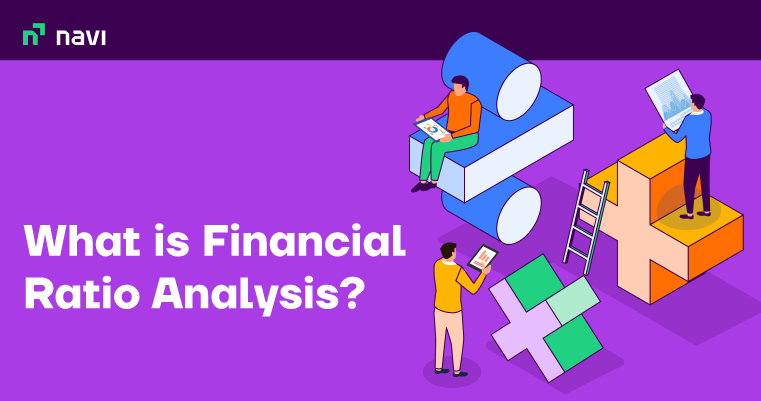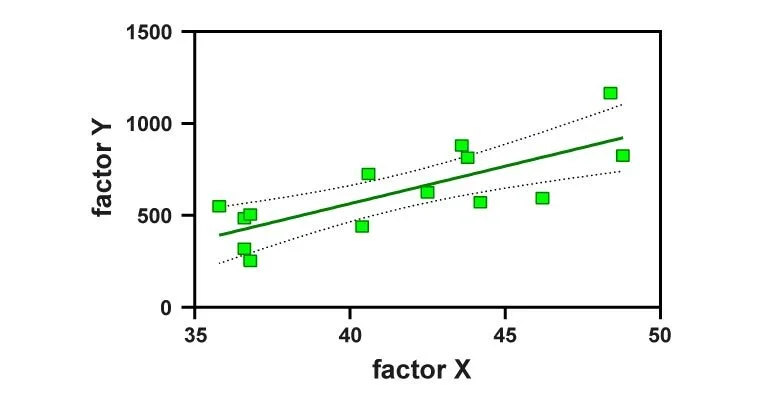Credit Guarantee Fund Trust For Micro And Small Enterprises

CGTMSE (full form: Credit Guarantee Funds Trust for Micro and Small Enterprises) was launched by the Indian Government and the Small Industries Development Bank of India in 2000. Availability of credit without the need for collateral or third-party guarantees would benefit the entrepreneurs looking to launch their Micro and Small Enterprises (MSE). The Indian Government together with the Ministry of Micro, Small and Medium Enterprises, initiated the idea of the Credit Guarantee Scheme (CGS) to strengthen the financing system and speed up loan flow to the MSE sector.
What is CGTMSE or Credit Guarantee Funds Trust for Micro and Small Enterprises?
CGTMSE or Credit Guarantee Fund Trust for Micro and Small Enterprises is a joint venture of the Indian Government, SIDBI and the Ministry of Micro, Small, and Medium Enterprises (MSME).
The prime purpose of the scheme is to improve the credit delivery system and provide credit guarantees on no-collateral-required term loans to the MSE sector. Further, it looks to offer the unserved and underprivileged sections access to finance.
The lender is protected by the guarantee if the borrower fails to repay the loan. As a result, the CGTMSE plan focuses on financing for first-generation entrepreneurs to compete without having to worry about collateral or third-party guarantees.
Features of Credit Guarantee Funds Trust for Micro and Small Enterprises (CGTMSE)
One of the prime goals of the CGTMSE coverage is to establish a robust credit relief system that fosters a better flow of credit to SMEs and MSMEs.
A few characteristics of the CGTMSE scheme are:
- Manufacturing and services, including retail commerce, are permitted; however, educational and training institutions, Self-Help Groups (SHGs), and agricultural-related activities are not covered under the ambit of the scheme.
- Under the CGTMSE, interest rates levied in accordance with RBI guidelines are eligible for coverage.
- The guarantee coverage varies between 75% and 85%, and 50% for retail activity.
- Credit facilities of up to Rs.200 lakh are available on an outstanding basis for Micro and Small Enterprises (MSEs); credit facilities of up to Rs.50 lakh are available for Regional Rural Banks (RRBs) and a few financial institutions.
- No collateral/third-party guarantee is required.
Facilities Offered under CGTMSE
CGTMSE scheme details and facilities offered are:
- Credit facilities up to Rs.200 lakh per qualifying borrower, both fund and non-fund based, are covered by the guarantee plan as long as they are given without collateral or third-party guarantee and are issued based on project feasibility.
- If the other qualifying criteria are met, a lender can provide a term loan or a working capital facility and still qualify for a guarantee cover. A credit facility provided to a borrower should, without a doubt, be devoid of collateral security or third-party guarantees.
Eligibility for Credit Guarantee Funds Trust for Micro and Small Enterprises (CGTMSE)
The scheme is open to any existing or new Micro and Small Businesses engaged in service or manufacturing. However, Micro and Small Enterprises like educational institutions, self-help groups, training institutes, and agriculture are excluded.
UDAAN, the official website of the CGTMSE provides a list of member lending institutions and has CGTMSE scheme eligibility criteria.
Banks/NBFCs offering loans under CGTMSE
All the scheduled MLIs, (Member Lending Institutions) including PSUs, private and foreign banks, a few rural and regional banks and any other bank designated by the Government of India, can offer loans under CGTMSE.
A list of some banks with CGTMSE loan interest rates is as follows:
| Banks/NBFCs | Interest Rates (p.a.) |
| HDFC Bank | 11.90% – 21.35% |
| IIFL Finance | Starting at 10.45% |
| ICICI Bank | Starting at 18% |
| Bajaj Finserv | Starting at 17% |
| Fullerton Finance | 17% – 21% p.a. |
*This table is for educational purposes only.
Also Read: What Is A Small Business Loan? Benefits, Types And Other Features
Guarantees of CGTMSE
If the loan is issued based on the project’s feasibility and without any security or third-party guarantee, the CGTMSE loan limit will be up to Rs.200 lakh per qualifying borrower, both fund and non-fund-based.
Annual Guarantee Fee (AGF)
Member Lending Institutions (MLIs) are required to pay the CGTMSE fee to certify the CGTMSE’s guarantee cover for a given borrower. The annual guarantee fee will increase once the guarantee cover is approved, and it will be applicable for one year from the commencement date of the guarantee cover. The amount of AGF to be levied is determined by the borrower’s category, followed by the credit facility’s quantum.
Structure of Annual Guarantee Fee
CGTMSE charges will be imposed on the outstanding loan amount rather than the guaranteed amount for credit facilities sanctioned or renewed to MSEs on or after April 1, 2018, as described below:
Source: CGTMSE official website
Coverage Criteria under CGTMSE
- Up to 75% of the defaulted principal amount is guaranteed by the trust (up to 85% of the defaulted principal amount for a select category of borrowers). For loan facilities up to Rs.50 lakh, the cover has a maximum guarantee cap of Rs.37.50 lakh.
- Other fees, such as penal interest, commitment fees, service fees, or any different levy/expense, are not covered by the guarantee.
Source: CGTMSE official website
Documents Required for CGTMSE
The documents required for CGTMSE are:
- A filled CGTMSE loan application and passport-sized photographs.
- Proof of identity and address, such as PAN card, Aadhaar Card, Passport, Rent/Lease Agreement, Utility Bills, etc.
- Company registration certificate or certificate of incorporation.
- The Promoter’s profile and contribution as part of the business project report, the cost report, business model, and financial statements.
Also Read: All You Need To Know About Availing A Business Loan Without ITR
How to Apply for a CGTMSE Loan?
If enterprises want to opt for a loan they have to follow a simple procedure. The following is the procedure for obtaining a loan through the CGTMSE:
- First, depending on the type of business, the borrower must establish a limited liability partnership, a sole proprietorship or a private limited company, and obtain the necessary approvals.
- Borrowers must undertake market research and write a business plan. Following that, the report is provided to the credit facility, and an application for a loan under the CGTMSE plan is made.
- Banks carefully examine the feasibility of the proposed model once the form and business plan have been processed and then process the loan application and grant sanction according to the bank’s policies.
- After the loan is approved, the lender applies for a guarantee cover with the CGTMSE authorities. If the loan is approved by CGTMSE, the borrower is accountable for the service fees and guarantee fee.
Final Word
Obtaining bank loans could be a challenging task for micro and small businesses. These traditional lenders often sought/seek documentation and collateral that most small firms lack.
The CGTMSE, run by the Ministry of MSME, assists entrepreneurs in overcoming these obstacles by providing collateral-free loans. The CGTMSE Schemes offer guarantee coverage for new and existing Micro & Small Enterprises engaged in service or manufacturing operations. The schemes do not apply to educational institutions, self-help groups, or retail businesses.
FAQs on CGTMSE
Ans: For preferred claims, there is an 18-month lock-in period following the disbursement of the last tranche of the loan. The lender will prioritize the demand once the defaulted account is termed as a non-performing asset (NPA) and the process of recovery has begun, as determined by CGTMSE from time to time.
Ans: Yes, as long as the maximum cover permitted per beneficiary does not exceed the permissible limit, the scheme allows co-financing with Member Lending Institutions (MLIs).
Ans: The annual guarantee cost can be paid after the claim is filed, but it must be paid before the first instalment of 75% of the guaranteed amount is paid. However, no claim can be filed before the original lock-in term expires and after the guarantee cover tenure expires.
Ans: MLIs issued by CGTMSE are guaranteed. As a result, Micro and Small Business entrepreneurs must contact banks or financial institutions with financing applications. On the CGTMSE website, you may find a list of the Trust’s MLIs.
Ans: The scheme includes female entrepreneurs, and the guarantee covers up to 80% of loans taken out by women entrepreneurs up to a limit of Rs. 40,00,000.
Before you go…
- Looking for instant ? personal loans 24*7 anywhere, anytime? Install the Navi app now!
- Or, maybe you’re looking to buy that house you’ve been eyeing ? and
you need a loan of up to Rs.10 crore. Install the Navi app now and get instant in-principle approval right away! Interest rates starting at 6.95% p.a. - How about an affordable health insurance policy ?⚕️ starting at a monthly premium of just Rs. 241? Install the Navi app now and get your policy in under 2 minutes.
- Instead, want to put your savings into action and kick-start your investment journey ? But don’t have time to do research. Invest now with Navi Nifty 50 Index Fund, sit back, and earn from the top 50 companies.
Mutual Fund investments are subject to market risks, read all scheme-related documents carefully.
This article has been prepared on the basis of internal data, publicly available information and other sources believed to be reliable. The information contained in this article is for general purposes only and not a complete disclosure of every material fact. It should not be construed as investment advice to any party. The article does not warrant the completeness or accuracy of the information, and disclaims all liabilities, losses and damages arising out of the use of this information. Readers shall be fully liable/responsible for any decision taken on the basis of this article.

Customer’s Feedback
No comments found.What is Primary Deficit? – Example, Formula & Measures
What is a Primary Deficit? Primary Deficit is the difference between the current year’s fiscal... Read More »What is Financial Ratio Analysis? – Objectives, Types and Uses
Ratio analysis is a process that allows people to assess the financial health of a company. Using t... Read More »Treasury Management – Its Functions, Types and Benefits
Even the most well-funded business can run into huge losses if it does not have the resources to fu... Read More »How Anti Money Laundering Combats Financial Crime?
Anti Money Laundering (AML) is a system of rules, laws, regulations, and procedures that financial ... Read More »What is Salvage Value and Why is it Useful?
Salvage value, also called scrap value, is the value of a specific asset after its useful life. In ... Read More »Key Difference Between Factoring and Forfaiting in Trade Finance
Factoring and forfaiting have grown in prominence as major sources of export financing. For the uni... Read More »What is Factoring and its Importance in Financial Management?
Factoring is a practice in which a company buys the accounts receivable of another company at a dis... Read More »What is Budget Surplus: Its Effects, Advantages and Impact with Examples
When the revenue of a government, business, or individual exceeds its expenses in a given period, i... Read More »What is Balanced Budget – Components, Importance and Examples
In financial planning or the budgeting process, a balanced budget is one in which total anticipated... Read More »What Does Inflationary Gap Mean in Macroeconomics?
In macroeconomics, the difference between current and potential GDP is known as a gap. This gap is ... Read More »What is Accounting Conservatism in Finance and How Does it Work?
Accounting conservatism involves a conservative set of accounting guidelines wherein the worst-case... Read More »Multiple Linear Regression (MLP) – Uses, Formula and Examples
Various statistical models help in establishing a relationship between different variables. Multipl... Read More »Top 10 Chit Fund Schemes in India in 2023
Chit funds are one of the most popular return-generating saving schemes in India. It is a financial... Read More »10 Best Gold ETFs in India to Invest in April 2023
Gold ETFs or Gold Exchange Traded Funds are passively managed funds that track the price of physica... Read More »10 Best Demat Accounts in India for Beginners in 2023
Creation of Demat accounts revolutionised the way trades were conducted at the stock exchanges. It... Read More »20 Best Index Funds to Invest in India in April 2023
What is an Index Fund? An index fund is a type of mutual fund or exchange-traded fund (ETF) that... Read More »Best Arbitrage Mutual Funds to Invest in India in April 2023
Arbitrage funds are hybrid mutual fund schemes that aim to make low-risk profits by buying and sell... Read More »10 Best SIP Plans in India to Invest in April 2023
What is SIP? SIP or Systematic Investment Plan is a method of investing a fixed amount in ... Read More »10 Best Corporate Bond Funds in India to Invest in April 2023
Corporate bond funds are debt funds that invest at least 80% of the investment corpus in companies ... Read More »10 Best Bank for Savings Account in India [Highest Interest Rate 2023]
Savings account is a type of financial instrument offered by several banks. It lets you safely depo... Read More »




















